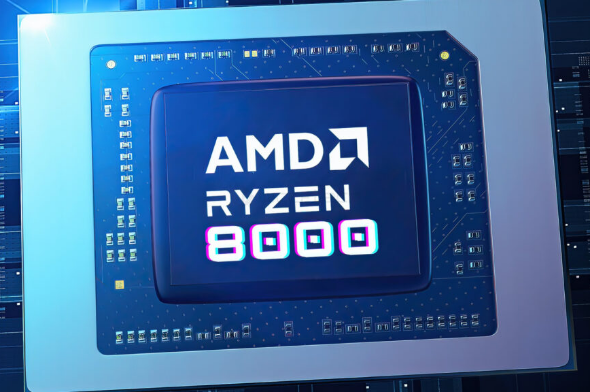Connection to DriversCloud Create a DriversCloud.com account Reset your DriversCloud.com password Account migration
The first information on the Ryzen 8000: AMD has more under its belt
It's hard to say where and when the battle between AMD and Intel will end.
Still available from many retailers, the Ryzen 5000 series (Zen3 and Zen3+) is already a thing of the past. Last September, the American company AMD launched its brand-new architecture - Zen4 - with a brand-new range of processors, the Ryzen 7000. The latter may not yet have met with the success AMD had hoped for, due to the high cost of the motherboard and support for DDR5 memory alone, but things are moving in the right direction for AMD... and the company is already looking to the future.
The group is well aware that its long-standing rival - Intel - is preparing to launch a new, highly promising energy-saving architecture, the Meteor Lake range, at the end of the year. However, while AMD is obviously keeping a close eye on Intel's progress in this area, the group headed by Lisa Su doesn't seem overly concerned. Plans for new generations of AMD processors seem to be progressing well, at least in the short term. As early as next year, we should be able to count on the launch of replacements for the Ryzen 7000.
Logically christened Ryzen 8000, these processors may differ according to the "family" to which they belong. No official confirmation has yet been received from AMD, but several sources point to the introduction of five Ryzen 8000 "families": Hawk Point, Strix Point, Fire Range, Strix Halo/Sarlak and Granite Ridge. The last family was already mentioned in a few rumours at the beginning of the year, but today we're talking about the two "Strix" Point and Halo series. These series bring together so-called APUs, i.e. processors equipped with a high-performance integrated graphics solution, eliminating the need for a dedicated graphics card.
Strix Point and Strix Halo are logically based on the Zen5 architecture, but take quite different paths. Strix Point will be a monolithic processor (a single "piece") based on a hybrid architecture combining high-performance Zen5 (x4) cores and more economical Zen5c (x8) cores. For its part, Strix Halo will be a multi-chip chip. The principle here is to assemble units with more specific functions. For example, a cIOD chiplet focused on I/O and a CCD chiplet grouping Zen5 cores. The obvious advantage is to be able to combine two (or even more) CCDs on a single chip to boost computing power. Strix Halo, on the other hand, is not expected to mix cores of different types: there is talk of 16 exclusively Zen5 cores. Finally, the two series are also distinguished by their integrated graphics solutions. In both cases, it will be based on RDNA3.5 architecture, but with 16 CPUs for Strix Point and, outright, 40 CPUs for Strix Halo.
If the latest rumours are true, we should have news of these two ranges very soon - and of the others too, no doubt - since AMD is said to be aiming to launch Strix Point in the middle of next year, and Strix Halo at the end of 2024.






